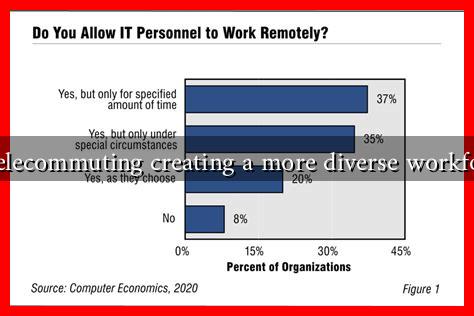-
Table of Contents
Is Telecommuting Creating a More Diverse Workforce?
In recent years, telecommuting has transformed from a niche work arrangement to a mainstream practice, especially accelerated by the COVID-19 pandemic. As organizations adapt to this new normal, a pressing question arises: Is telecommuting fostering a more diverse workforce? This article explores the relationship between remote work and workforce diversity, examining the benefits, challenges, and real-world examples that illustrate this evolving landscape.
The Rise of Telecommuting
Telecommuting, or remote work, allows employees to perform their job duties from locations outside of a traditional office environment. According to a report by FlexJobs, remote work has increased by 159% since 2005, with a significant spike during the pandemic. This shift has opened doors for many individuals who may have previously faced barriers to employment.
Benefits of Telecommuting for Workforce Diversity
Telecommuting can enhance workforce diversity in several ways:
- Geographic Flexibility: Remote work allows companies to hire talent from various geographic locations, including rural areas and regions with high unemployment rates.
- Accessibility: Individuals with disabilities or those who require flexible schedules due to caregiving responsibilities can find remote work more accommodating.
- Broader Talent Pool: Companies can tap into a wider range of skills and experiences, leading to innovative ideas and solutions.
- Reduced Bias: Remote hiring processes can minimize unconscious bias related to appearance, gender, or ethnicity, as candidates are often evaluated based on their skills and qualifications rather than their physical presence.
Challenges to Achieving Diversity Through Telecommuting
While telecommuting presents opportunities for a more diverse workforce, it is not without its challenges:
- Digital Divide: Not everyone has equal access to reliable internet and technology, which can hinder participation in remote work.
- Company Culture: Building an inclusive company culture can be more challenging in a remote environment, potentially leading to feelings of isolation among employees from underrepresented groups.
- Recruitment Practices: If companies do not actively seek diverse candidates, they may inadvertently perpetuate existing biases in their hiring processes.
Case Studies: Companies Leading the Way
Several organizations have successfully leveraged telecommuting to enhance workforce diversity:
- Salesforce: The tech giant has implemented a remote-first policy, allowing them to hire talent from diverse backgrounds across the globe. Their commitment to equality is evident in their hiring practices and employee resource groups.
- GitLab: As a fully remote company, GitLab has built a diverse workforce by prioritizing inclusivity in their hiring process. They actively seek candidates from various backgrounds and provide resources to support underrepresented employees.
- Buffer: Buffer’s remote work model has enabled them to hire team members from different countries and cultures, fostering a rich tapestry of perspectives that enhance creativity and problem-solving.
Statistics Supporting the Shift
Research supports the notion that telecommuting can lead to a more diverse workforce:
- A study by McKinsey found that companies in the top quartile for gender diversity on executive teams were 21% more likely to outperform on profitability.
- According to a report by the Harvard Business Review, remote work can increase employee retention rates by 25%, particularly among women and minorities.
Conclusion: A Path Forward
Telecommuting has the potential to create a more diverse workforce by breaking down geographical barriers, increasing accessibility, and reducing bias in hiring practices. However, organizations must remain vigilant about the challenges that accompany this shift, such as the digital divide and the need for an inclusive company culture. By actively promoting diversity and inclusion in their remote work policies, companies can harness the full potential of a diverse workforce, leading to greater innovation and success.
As we move forward, it is crucial for businesses to embrace telecommuting not just as a temporary solution but as a strategic approach to building a more inclusive and diverse workforce. For further insights on this topic, you can explore resources from FlexJobs.

